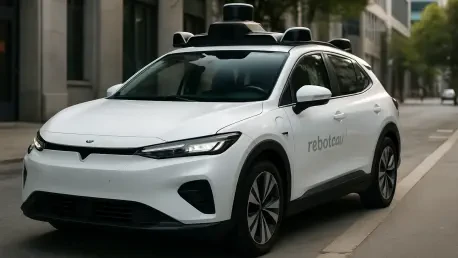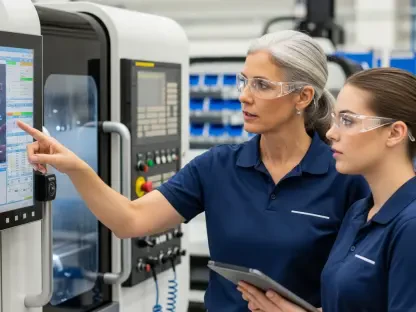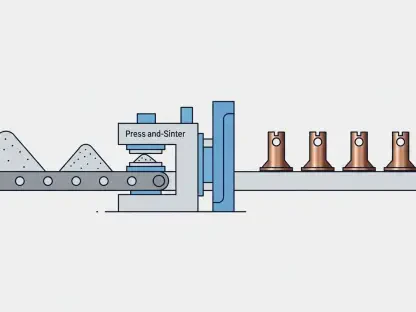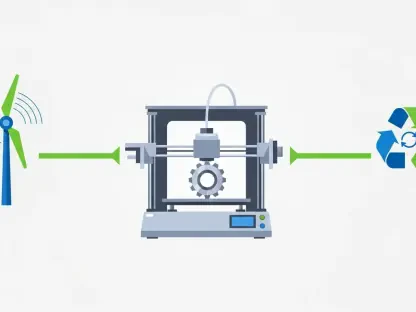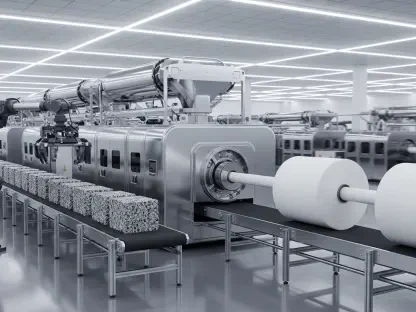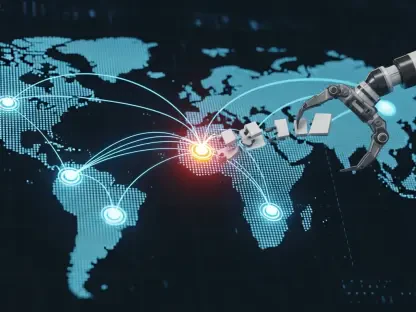Setting the Stage for a Transportation Revolution
In a move that signals a major shift in the transportation landscape, Uber Technologies, Inc., in partnership with Lucid Group, Inc. and Nuro, Inc., is set to redefine urban travel dynamics. This alliance focuses on delivering a sophisticated robotaxi service that promises comfort paired with advanced safety and scalability. The strategic goal is to deploy over 20,000 cutting-edge Lucid vehicles—integrated with Nuro’s Level 4 autonomous technology—on Uber’s vast network over the next few years. With operations in over 70 countries and an average of 34 million trips daily, Uber provides the extensive framework needed to support and scale this ambitious venture globally.
Market Evolution and Historical Context
The journey to autonomous transportation has been marked by innovation and significant challenges. While the concept of self-driving vehicles is not new, recent technological advancements have accelerated progress in this space. Early innovators like Waymo and Tesla paved the way by demonstrating the viability of self-driving cars. Yet, regulatory challenges, public skepticism, and technical hurdles have slowed full-scale adoption. Historical advancements in artificial intelligence and sensor technology have laid the groundwork for today’s more sophisticated offerings, allowing companies like Uber, Lucid, and Nuro to push forward, adapting their strategies to capitalize on these innovations.
Detailed Examination of the Joint Market Dynamics
Advancing Autonomy with Innovative Technologies
Central to this partnership is the convergence of Lucid’s engineering excellence and Nuro’s advanced autonomy technology. Lucid’s Gravity, with its robust architecture designed for long-range and efficiency, effectively complements Nuro’s sophisticated Level 4 system. This harmonious technology blend sets a new benchmark for reliable, efficient urban commuting solutions. With a remarkable range of 450 miles, the Lucid Gravity maximizes fleet availability by reducing downtime. As the collaboration unfolds, the focus will remain on overcoming regulatory barriers and conducting exhaustive safety tests to ensure the vehicles meet the highest standards.
Addressing Multi-Layered Challenges and Unique Opportunities
Although autonomous vehicles offer promising economic and environmental advantages, integrating these technologies seamlessly into existing urban infrastructures remains complex. The ongoing testing phase in Nuro’s Las Vegas facility highlights the importance of simulated scenarios and monitored trials in validating the safety and efficiency of these self-driving vehicles. The potential for reduced operational costs makes the widespread adoption of robotaxis lucrative. Yet, companies must address public concerns related to safety and cybersecurity, which remain pivotal in gaining consumer trust as autonomous vehicles evolve.
Navigating Global Deployment Complexities
Launching robotaxi services on a global scale presents unique challenges, shaped by divergent regulatory landscapes and varying consumer attitudes. Each region presents its own set of obstacles, with infrastructure readiness and legal frameworks playing critical roles in the adoption pace. While the United States remains a potential leader in robotaxi rollouts, other regions may require tailored approaches to meet local demands and overcome specific challenges. Dispelling myths around autonomous travel reliability and reinforcing public confidence is vital for success in international markets.
Insights Into Emerging Trends and Future Directions
The autonomous vehicle market is experiencing rapidly evolving trends, defined by continuous technological enhancements. Developments in artificial intelligence and machine learning provide opportunities for increased capabilities of self-driving systems, while advancements in battery technology promise improvements in range and charging efficiency. The shift toward shared and sustainable transportation models challenges traditional norms and forces regulatory frameworks to swiftly adapt. Future landscapes could see autonomous robotaxis integrated within urban ecosystems, altering how people perceive and interact with transportation systems.
Strategic Lessons and Practical Guidance
For stakeholders involved in autonomous transportation, the Uber-Lucid-Nuro partnership offers key strategic insights. Successful ventures prioritize alliances that capitalize on the strengths of each contributor, focusing on compliance with regulatory standards and fostering public engagement. Emphasizing safety, efficiency, and building consumer trust can ensure fruitful outcomes. Stakeholders must adopt flexible, adaptable strategies to cope with unpredictable urban environments and regulatory landscapes, enabling them to embrace and navigate the complexities of autonomous technology effectively.
Reflecting on the Impact of Urban Mobility Transformation
The Uber collaboration with Lucid and Nuro marks a transformative point in autonomous transportation endeavors, redefining urban mobility norms. Technology has acted as the cornerstone of this shift, enabling improved solutions to urban transportation challenges. This venture’s significance is not limited to immediate gains; it sets the stage for future innovations, projecting a trajectory in sustainable transport strategies. As autonomous driving capabilities evolve, the focus centers on ensuring safety, fostering widespread acceptance, and exploring new possibilities for transformed travel.
